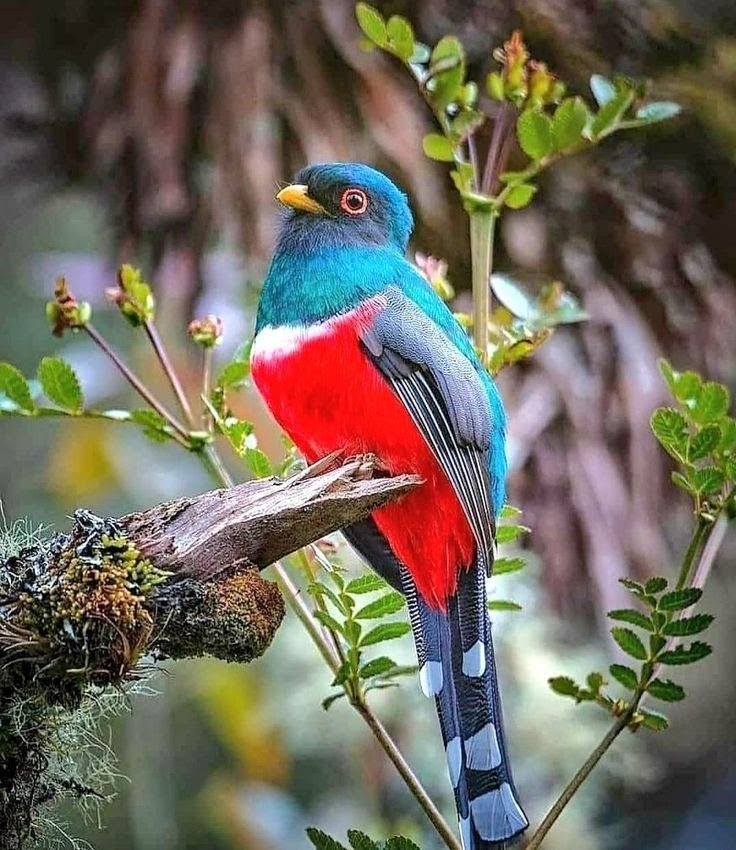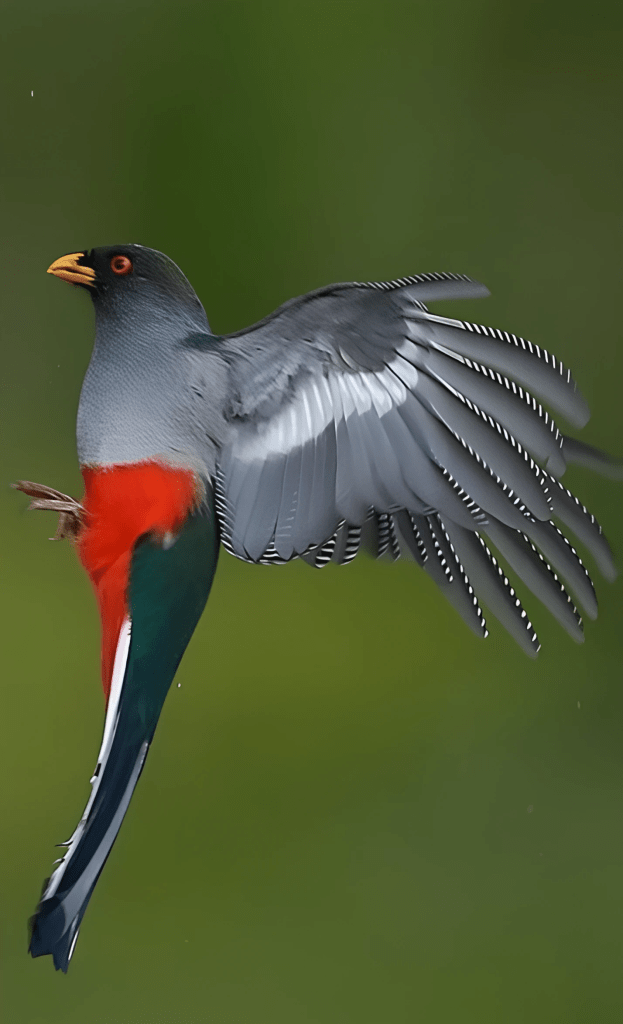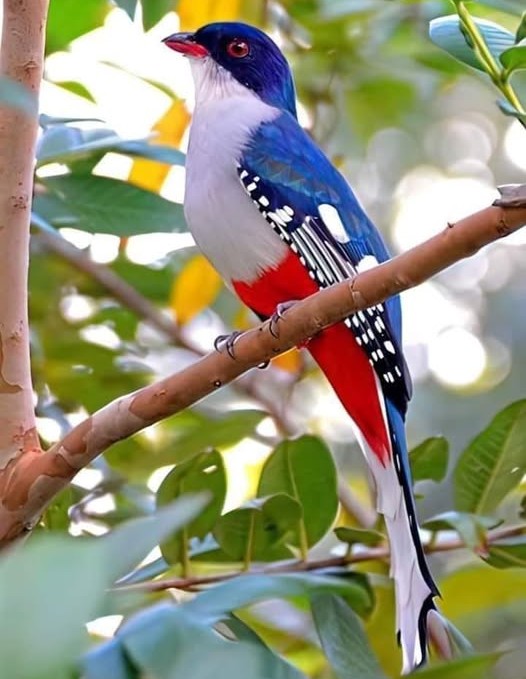Overview:
Haiti’s nationwide fowl, Kanson Wouj or Cacos, is a vibrant image of magnificence and resistance—however is it vanishing? Under, The Haitian Occasions highlights seven key info concerning the colourful fowl and why they matter.
From guerrilla resistance to ecological rarity, the colourful fowl, recognized in Haiti as Kanson Wouj, Haitian Creole for “crimson underpants,” is greater than a splash of shade within the cover. It’s a residing image of Haiti’s cultural identification, resilience and pressing want for conservation.
Whereas this placing and endemic fowl stays comparatively frequent in elements of the Dominican Republic, its inhabitants in Haiti has shrunk dramatically, ecologists and conservationists say.Outdoors of residents within the north, south, southeast and southwest, many Haitians are unfamiliar with the species. Confined primarily to the diminishing forests of the Massif de la Hotte and Chaîne de la Selle, Kanson Wouj faces rising threats from habitat loss and deforestation. Regardless of being labeled as a “least concern” species by the Worldwide Union for Conservation of Nature (IUCN), specialists warn that its numbers are declining and its survival in Haiti could quickly be in danger with out stronger environmental protections.
The next are seven info concerning the Hispaniolan Trogon—Haiti’s symbolic but threatened nationwide fowl:
1. Its native title means “crimson underpants”
Haitians affectionately name the fowl Okayanson Wouj, referring to its vivid crimson stomach resembling a pair of shorts. The title displays the inventive methods many Haitians join with their pure environment. It’s scientifically labeled as a species within the trogon household, or Trogonidae, which is Greek for “nibbling” and refers to the truth that these birds gnaw holes in timber to make their nests.
2. It’s solely discovered on one island on the planet
The Haitian Trogon—additionally recognized by the exterior world because the Hispaniolan Trogon or Priotelus roseigaster, that are two Greek phrases that means genus of trogons and rosy stomach—is endemic to this a part of the Caribbean, making it a uncommon and regionally distinctive species. It’s present in each Haiti and the Dominican Republic, however it’s rather more ample on the latter facet of the border.
Kanson Wouj is certainly one of solely two trogon species recognized within the Caribbean by ecologists and conservationists, alongside the Cuban trogon.
3. It helped outline a nationwide resistance motion referred to as Cacos
Through the U.S. occupation of Haiti from 1915 to 1934, peasant fighters organized a guerrilla resistance towards the American Marines, referred to as Cacos. That is one other title given to the fowl by some locals, which is after the Haitian trogon. Just like the fowl, they moved stealthily by the forest and attacked their enemies unexpectedly. Resistance leaders similar to Rosalvo Bobo, Charlemagne Péralte and Benoît Batraville drew inspiration from the Cacos’ legacy of their battle for Haitian sovereignty.
4. It thrives in old-growth forests, however these are vanishing
This fowl is determined by giant, decayed timber with pure cavities for nesting. It’s mostly discovered between 500 and three,000 meters in elevation, inhabiting moist montane, broadleaf, pine, and even dry forests. In Haiti, its habitat has been severely degraded, limiting its presence to just some protected zones like La Visite and Pic Macaya nationwide parks. Occasional sightings in mangrove swamps west of Miragoâne, about 60 miles southwest of Port-au-Prince, stay unconfirmed as everlasting populations.

5. It’s labeled as “least concern,” however specialists say that’s deceptive
In keeping with the IUCN, the trogon is at present listed as a species of “least concern,” that means it’s not instantly prone to extinction. Nevertheless, this designation is predicated on world inhabitants figures that don’t replicate the drastic habitat loss occurring in Haiti. In actuality, conservationists have documented a reasonably fast inhabitants decline because of deforestation.
6. Its weight-reduction plan is numerous, and its foraging technique is aerial
Kanson Wouj feeds totally on bugs but in addition consumes small vertebrates like anoles and fruits, significantly these from the West Indian sumac (Brunellia comocladifolia). Like different trogons, it forages largely in mid-level forest canopies, utilizing agile flight to grab meals from branches or fruit in midair.

7. It nonetheless flies with combined flocks—simply not typically
Though the fowl is often solitary or seen in pairs, it has sometimes been noticed foraging in mixed-species flocks, particularly within the humid pine forests of the island shared by Haiti and the Dominican Republic. These interactions, recorded in a 2011 research by researchers Cañizares Morera, Jeff Gerbracht, and C. C. Rimmer for Cornell Lab of Ornithology and revealed in 2024 in Birds of the World, provide insights into its ecological function and the interdependence of tropical fowl communities.
“Its foraging conduct is presumed to be much like that of different species of trogon: most meals is taken in aerial sallies to fruit or surrounding vegetation,” the researchers observe.
Why the Kanson Wouj issues
As Haiti’s nationwide fowl, the Hispaniolan Trogon isn’t just a logo—it’s a warning. Its decline mirrors the broader environmental degradation affecting Haiti, the place forest cowl has dropped under 2% of its unique extent. Conservationists like Haitian ecologist Anderson Jean emphasize that defending the Kanson Wouj additionally means safeguarding the way forward for biodiversity, together with Haiti’s fauna and flora, local weather resilience and even nationwide pleasure.“At a time when a lot is being misplaced, the survival of this brilliantly feathered fowl stands as a check of Haiti’s will to guard what’s left—and to reclaim its legacy of energy and sovereignty in each kind, feathered or not,” Jean informed The Haitian Occasions.

